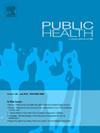减少加拿大医院急诊科等待时间的干预措施:范围审查
IF 3.2
3区 医学
Q1 PUBLIC, ENVIRONMENTAL & OCCUPATIONAL HEALTH
引用次数: 0
摘要
加拿大急诊科(EDs)的等待时间延长对患者、医院工作人员和医疗保健系统产生了不利影响。尽管关于加拿大急诊科等待时间的文献越来越多,但由于缺乏对急诊科实施的干预措施的当前全面映射,我们对减少等待时间的策略的理解仍然是零星的。这项范围审查旨在解决这一差距,并绘制加拿大ED干预措施的地图,这可能对政策制定者和医疗保健专业人员做出循证决策有用。研究设计范围审查。方法采用Arksey和O'Malley的方法框架,总结了2010年1月至2024年5月加拿大急诊室干预措施的同行评议文章。为了对不同的干预进行分类和解释,我们使用Braun和Clark的主题分析方法进行了叙事综合。结果我们发现了21篇文章,主要集中在安大略省(n = 16)。大多数研究采用回顾性评价(n = 16),其次是聚类随机试验(n = 2)、准实验设计(n = 1)、前瞻性调查(n = 1)和前后设计(n = 1)。几乎所有的病人都在高容量的城市急诊科,有一个在农村。干预措施分为五个主题:替代地点、财政激励、卫生人力资源增强、流程改进和综合干预。虽然替代急诊科地点、加强卫生人力和综合方法有望减少急诊科等待时间,但财政激励和流程改进举措的结果喜忧参半。所审查的干预措施侧重于提高ED的运营效率,但可持续减少等待时间需要多方面的、具体情况的方法。未来的研究应考虑更广泛的卫生系统挑战和ED背景问题。本文章由计算机程序翻译,如有差异,请以英文原文为准。
Interventions to reduce wait times in emergency departments in Canadian hospitals: A scoping review
Objectives
Prolonged wait times in Canada's Emergency Departments (EDs) adversely impact patients, hospital staff, and the healthcare system. Despite the growing literature on ED wait times in Canada, our understanding of what strategies work to reduce wait time remains sporadic due to the absence of a current, comprehensive mapping of the interventions implemented within EDs. This scoping review aims to address this gap and map ED interventions in Canada, which may be useful for policymakers and healthcare professionals to make evidence-informed decisions.
Study design
Scoping Review.
Methods
Utilizing Arksey and O'Malley's methodological framework, we summarized peer-reviewed articles on interventions in Canadian EDs from January 2010 to May 2024. To categorize and interpret the diverse interventions, we conducted a narrative synthesis using Braun and Clark's thematic analysis method.
Results
We identified 21 articles, predominantly focusing on Ontario (n = 16). Most studies utilized retrospective evaluations (n = 16), followed by cluster randomized trials (n = 2), quasi-experimental design (n = 1), prospective survey (n = 1), and before-after design (n = 1). Nearly all were in high-volume urban EDs, with one in a rural setting. Interventions were categorized into five themes: Alternative Location, Financial Incentives, Health Workforce Enhancement, Process Improvement, and Integrated Intervention. While alternative ED locations, health workforce enhancement, and integrated approaches showed promise in reducing ED wait times, financial incentives and process improvement initiatives showed mixed results.
Conclusions
The reviewed interventions focused on strengthening ED operational efficiencies, but sustainable wait time reduction necessitates multifaceted, context-specific approach. Future research should consider broader health system challenges and ED contextual issues.
求助全文
通过发布文献求助,成功后即可免费获取论文全文。
去求助
来源期刊

Public Health
医学-公共卫生、环境卫生与职业卫生
CiteScore
7.60
自引率
0.00%
发文量
280
审稿时长
37 days
期刊介绍:
Public Health is an international, multidisciplinary peer-reviewed journal. It publishes original papers, reviews and short reports on all aspects of the science, philosophy, and practice of public health.
 求助内容:
求助内容: 应助结果提醒方式:
应助结果提醒方式:


